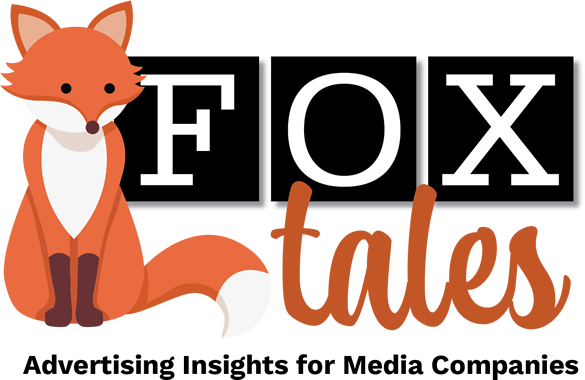Association media is in many ways similar to the rest of the media world: Connect buyers and sellers in multiple ways, share insights about buyers with sellers, aggregate audiences in as many channels as you can, including print, digital and in-person events.
But association media is also unique in many ways. Your audience is both paying members and the world at large. You have organizational goals that sometimes conflict with a robust audience-facing array of media. And so on.
It helps to have a deep understanding about these distinctions and a strategy for optimization. Rich Vallaster, senior director of industry relations and community engagement at Personify, a tech platform dedicated to helping associations manage and integrate business operations, is a frequent speaker at events who shares his deep knowledge of all things association related. We met Rich at PAR’s RevUP Summit earlier this month and wanted to share some of his insights with our Fox Tales audience. Below, you’ll find a conversation packed with great insights and actionable tips.
Fox Tales: What led you to your current role as senior director of industry relations and community engagement?
Rich Vallaster: While I have been with my current company for over 10 years, the bulk of my career has been in associations and events. My vantage point and experience became a mandate—to connect the dots across events, membership, learning, commerce and community so that organizations and associations can not only fund their missions but also grow strategically.

Rich Vallaster.
Fox Tales: Tell us the state of associations, their strengths and weaknesses, successes and challenges, circa 2025.
Vallaster: Here are some elements that I see as strengths, weaknesses, successes, or challenges.
- Strengths: There’s a strong desire for members and industry partners to meet in person at events. Increased needs for community (and networking), career advancement and education in uncertain times. And there are huge datasets ripe for exploration.
- Weaknesses: There’s comfort in familiarity with products/services and processes. Many associations have aging membership and new generations with less of a desire to belong. They have slow decision cycles, board interference and legacy tech that hides insights in silos.
- Successes: Advocacy is becoming more valuable to members. Associations succeed when they harness their communities, blending year-round learning that culminates in in-person events. Similarly, those that shift mindsets from member programs to products that members will repeatedly pay for will succeed.
- Challenges: Staff and member resources are becoming squeezed in terms of time and budget. Proving the ROI of membership and event attendance is a perennial challenge.
Fox Tales: Same question for the events industry overall. What’s really changed?
Vallaster: Here’s my take.
- Strengths: Events continue to be the best way to connect, network, educate and engage at scale that can drive revenue.
- Weaknesses: Mergers and acquisitions among sponsor and exhibiting companies are reducing spending power at events. There is slower growth in attendee numbers compared to pre-pandemic numbers. There’s competition for attendee time and resources. And increased travel costs.
- Successes: Many events are finally reaching their pre-pandemic numbers. Event organizers are starting to create and design events with the attendee in mind.
- Challenges: Nearly identical to association challenges: Proving the ROI of event participation (both attendees and exhibitors/sponsors) and constrained resources for event planning teams and those they serve.
Fox Tales: Your speaking and webinar topics cover a dazzling array of topics. What are the two or three most pressing topics right now?
Vallaster: Three key areas remain top of mind for associations and organizations.
1. Reducing costs and increasing revenue without compromising the experience for their members or attendees. It can be done!
2. While some seem exhausted about hearing about it, artificial intelligence remains a hot topic. Although its adoption continues to rise, many organizations still struggle to fully understand its potential and to develop effective policies for its use.
3. With many associations generating 40%-80% of their revenue from conferences and trade shows, they are always looking for new ways to grow events and attract new audiences.
Fox Tales: One of your topics is “Becoming a Better Exhibitor.” What are the things you recommend?
Vallaster: Read. While event organizers frequently send a lot of information, it’s incumbent on exhibitors to read and follow the proper steps, meet deadlines, and make the most of the event. Increased costs and missed opportunities are easy to miss by simply not reading.
Know Your Goals. If you don’t know what you hope to accomplish, how you will judge the success of an event? Planning, training, marketing and activating at events works best if you know what your goals are.
Market: Simply having a booth or sponsorship isn’t enough to engage people. Pre-show marketing, building online profiles, creative booth activations, and a well-trained staff will increase your chances of success.
Fox Tales: Related question: With sponsor and exhibitor strategies, what works (and what doesn’t)?
Vallaster: Here’s what works:
- Custom and Bespoke Packages. With every company having different goals, understanding their needs and building packages that can deliver on those goals will drive repeat business.
Thought Leadership. Industry partners also have a wealth of knowledge across their staff and client base. Tapping into that provides an opportunity for both the exhibiting/sponsoring company and attendees alike.
Year-Round Opportunities. Companies don’t just want to be in front of their buyers at your event. They want to be involved year-round.
Here’s what doesn’t:
- Visibility Isn’t Value. The days of slapping a logo on a foamcore panel and calling it a sponsorship are over. Companies want opportunities to directly engage with their target audiences.
Useless Benefits. Too often, associations think they are providing benefits of value to exhibiting and sponsoring companies. Start asking about and reviewing benefits to revise them annually.
Qualified and Quantified. Companies want transparency in attendance numbers. More importantly, they want to understand who is qualified to either influence or purchase their products or services. Record attendance isn’t valuable if the right audience is not in the room.
